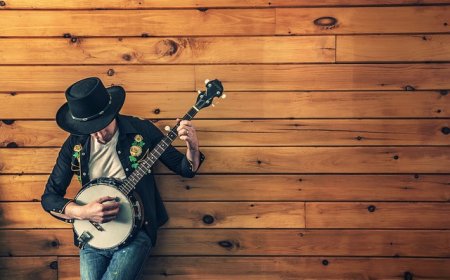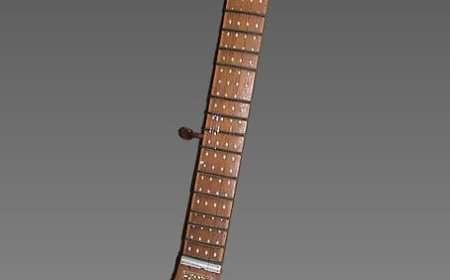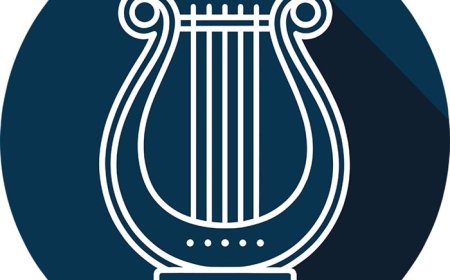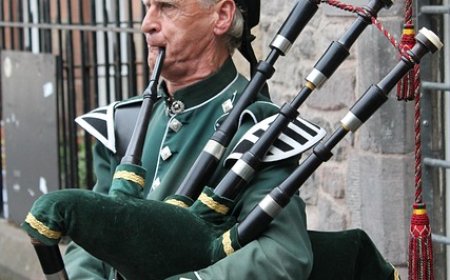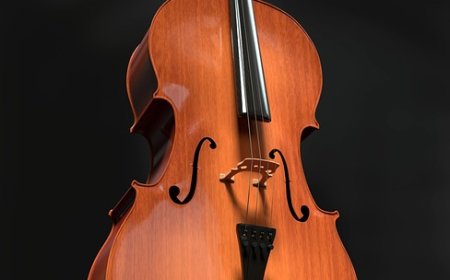Oud Facts for Students | Discover the Ancient String Instrument
Explore the oud—an ancient, fretless string instrument from the Middle East with a deep, mellow sound. Learn how it’s played, its history, parts, and musical traditions.
🪕 All About the Oud
🥇 Introduction
The oud is a powerful and emotional plucked string instrument from the Middle East, often called the "ancestor of the guitar." With its short neck, rounded body, and deep, mellow sound, the oud has played an important role in music for over 1,000 years. It is used in Arabic, Turkish, Persian, Greek, and North African musical traditions and remains a symbol of storytelling, poetry, and emotional expression.
🎶 What Is an Oud?
The oud is a fretless string instrument with a pear-shaped body and 11 or 13 strings, arranged in 5 or 6 pairs plus one single bass string. Because it has no frets (unlike a guitar), the oud can play smooth slides and microtones, which are important in Middle Eastern music.
It is played using a special plectrum called a risha or mizrab, which is usually made from plastic, horn, or feather. The oud is held against the body and plucked to produce rich, warm tones that are ideal for both melody and rhythm.
The oud is one of the most expressive instruments in the world, able to sound joyful, sorrowful, mystical, or powerful-often all in the same song!
🧩 Parts of the Oud
Each part of the oud contributes to its unique tone and beauty:
-
Bowl (Body) - Made from thin strips of wood glued together to form a rounded back
-
Soundboard (Top) - The flat wooden front where the strings are stretched
-
Sound Holes - Often in decorative shapes, usually one large circle or three small ones
-
Neck - Short and fretless, allowing smooth finger movement
-
Strings - 11 or 13 total, grouped into 5 or 6 courses, tuned in fourths
-
Tuning Pegs - Wooden pegs at the pegbox used to adjust the pitch of each string
-
Bridge - Where the strings connect to the soundboard
-
Risha (Pick) - A flat pick used to pluck the strings
The body of the oud is often hand-carved and decorated, making each one a unique piece of art as well as a musical instrument.
⚙️ How Does the Oud Work?
The oud produces sound when its strings are plucked with a risha. The vibration from the string travels into the wooden body, where the bowl-shaped back helps project and enrich the sound.
Because the neck has no frets, the musician must learn to press the strings in just the right places to play the correct notes. This makes it harder to learn than a guitar but allows for microtonal playing, which gives Middle Eastern music its distinctive flavor.
Oud music includes:
-
Improvisation (taqsim)
-
Classical compositions
-
Folk songs
-
Modern fusions with jazz, pop, and other styles
📜 History of the Oud
The oud has been played for over 1,200 years, with roots going back to ancient Persia and Mesopotamia. It evolved from earlier instruments like the barbat and became popular throughout the Islamic Golden Age (8th-13th centuries).
In Arab and Turkish cultures, the oud became the centerpiece of classical music, often used for both solo and ensemble performances. It was played by musicians, poets, and philosophers. The instrument eventually made its way into Europe, where it helped inspire the development of the lute, which later influenced the modern guitar.
Today, the oud is still a core instrument in Middle Eastern orchestras, and its sound has become known and loved around the world.
🥁 Famous Oud Players
These musicians helped make the oud famous in classical and modern music:
-
Munir Bashir - Iraqi master known for improvisation and Arabic maqam
-
Farid al-Atrash - Syrian-Egyptian singer and oud player, also a movie star
-
Naseer Shamma - Iraqi virtuoso known for education and new techniques
-
Anouar Brahem - Tunisian composer who blends jazz and oud music
-
Rahim AlHaj - Iraqi-born artist using the oud to promote peace and healing
-
Joseph Tawadros - Australian-Egyptian oud player who mixes oud with jazz and classical music
🎶 Learning to Play the Oud
The oud is fun and challenging to learn. It takes:
-
Careful ear training to play without frets
-
Practice using the risha to pluck smoothly
-
Learning to tune and care for the strings
-
Memorizing maqams, which are musical scales used in Middle Eastern music
-
Practicing taqsim-a form of musical storytelling through improvisation
Beginners often start with simple melodies and rhythms, and gradually explore the rich musical traditions from various countries like Egypt, Lebanon, Iraq, Turkey, and Syria.
😄 Fun Facts About the Oud
-
The word "oud" means "wood" in Arabic!
-
The oud is the grandfather of the lute and guitar.
-
It has no frets, which lets players slide between notes.
-
Ancient ouds had 4 strings, but modern ones have up to 13.
-
Oud music often includes improvisation (taqsim) to express emotion.
-
Some ouds are so large they almost rest on the player's knee.
-
The oud is played across the Arab world, Turkey, Iran, and North Africa.
👧 Kid-Friendly Summary
The oud is a pear-shaped string instrument from the Middle East. It has no frets, so players slide their fingers to make music. It sounds deep and warm and is used to play music full of emotion. It's very old and helped inspire the guitar!
📚 Vocabulary Words
Oud – A Middle Eastern string instrument with a rounded body and no frets
Risha – A pick used to pluck the strings of the oud
Fretless – An instrument without metal bars to mark the notes
Maqam – A musical scale used in Arabic and Turkish music
Soundboard – The top wooden part of the oud that helps make the sound louder
Bridge – The part where the strings rest on the body
Improvisation (Taqsim) – Making up music on the spot to tell a story
Tuning Pegs – Used to adjust the pitch of each string
❓ Interactive Quiz (8 Questions)
1. What region is the oud from?
A. South America
B. Middle East
C. China
D. India
2. How many strings does a modern oud usually have?
A. 4
B. 6
C. 11 or 13
D. 21
3. What does the word “oud” mean in Arabic?
A. Music
B. Guitar
C. Wood
D. Pick
4. What shape is the back of the oud?
A. Flat
B. Pear-shaped
C. Square
D. Pointed
5. What makes the oud different from a guitar?
A. It’s electric
B. It has more strings
C. It’s fretless
D. It uses a bow
6. What is the risha used for?
A. Tuning the oud
B. Decorating the oud
C. Plucking the strings
D. Cleaning the oud
7. What is taqsim?
A. A type of oud
B. A kind of dance
C. A musical story played through improvisation
D. A tuning method
8. Who was a famous oud player and movie star?
A. Ravi Shankar
B. Yo-Yo Ma
C. Farid al-Atrash
D. George Harrison


















































